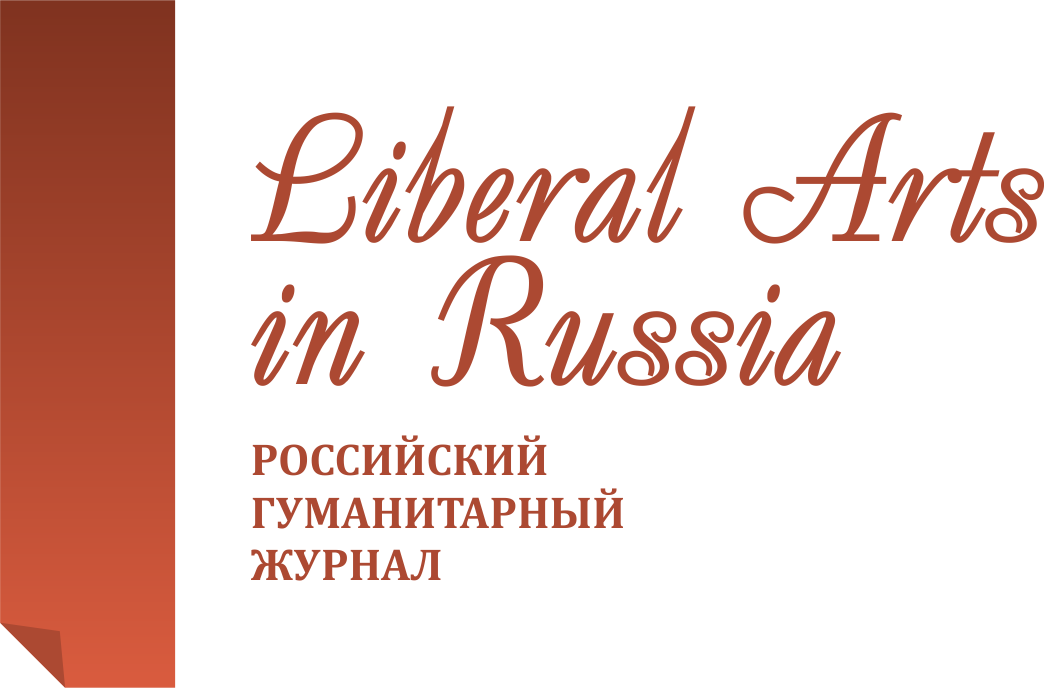On the question of derivation in the children’s speech
Liberal Arts in Russia. 2021. Vol. 10. No. 2. Pp. 99-110.
Get the full text (Russian) Email: stl2006@list.ruAbstract
The author of the article studies derivational innovations produced by Russian-speaking pre-school children aged 2-6 years. The data for the analysis was provided by the Foundation of the Children’s Speech Data of the Laboratory of Children’s Speech (St. Petersburg, Herzen State Pedagogical University). The author compared derivational and inflectional innovations and found out that innovative word forms constructed by different children often coincide (*iskayu ’I look for’, *voz’mit’ ’to take’, *poros’onki ’piggies’, *plokheye ’worse/*badder’), while new words produced by children to not usually tend to coincide (*balovan’ye ’the pampering’, *bol’nota ’pain’, *razbudit’s’a ’to be awaken’, *vgasit’ ’to re-turn off’). The reason lies in the fact that the number of inflection models is very limited compared to the high variety of derivation models and uncountable range of potentially productive words. The author regards children’s innovations as constructs allowed by the language system but absent in the usual speech that fill absolute and relative gaps in the language. Derivational innovations fill relative gaps. Comparing them to their usual counterparts, it was found out that children’s derivatives are more transparent in the morphological sense, as both producing and produced words are similar in the place of the stress and the alternation of the forms. This proves that children construct new words on the basis of the most general, prototypical rules. This is the reason why children’s innovations (not only derivational, but also inflectional ones, which are also highly transparent) provide valuable data for the linguistic study, which allows us to discover the hierarchical structure of procedural rules. The author separately analyzed cases of filling absolute gaps, as they are individual and depend on many subjective and objective factors.
Keywords
- • derivation
- • inflection
- • derivative
- • relative gap
- • absolute gap
- • language rule
References
- Arutyunova N. D. Ocherki po slovoobrazovaniyu v sovremennom ispanskom yazyke [Essays on word formation in modern Spanish]. Moscow, 1961.
- Baudouin de Courtenay J. A. Izbrannye trudy po obshchemu yazykoznaniyu. T. 1 [Selected works on general linguistics. Vol. 1]. Moscow, 1963.
- Bondarko A. V. Teoriya morfologicheskikh kategorii i aspektologicheskie issledovaniya [Theory of morphological categories and aspectological studies]. Moscow: YaSK, 2005.
- Bulakhovskii L. A. Kurs russkogo literaturnogo yazyka [Course of Russian literary language]. 5 ed. Kiev, 1952.
- Voeikova M. D. Stanovlenie imeni. Rannie etapy usvoeniya det'mi imennoi morfologii russkogo yazyka [Formation of a name. The early stages of learning the nominal morphology of the Russian language by children]. Moscow: YaSK, 2015.
- Gagarina N. V. Stanovlenie grammaticheskikh kategorii russkogo glagola v det-skoi rechi [Formation of grammatical categories of the Russian verb in children's speech]. Saint Petersburg, 2008.
- Gasparov B. M. Yazyk, pamyat', obraz. Lingvistika yazykovogo sushchestvovaniya [Language, memory, image. Linguistics of linguistic existence]. Moscow: NLO, 1996.
- Gvozdev A. N. Voprosy izucheniya det-skoi rechi [Issues of studying children's speech]. Moscow, 1961.
- Govoryat deti: Slovar'-spravochnik [Children speak: Dictionary handbook]. Saint Petersburg: Niva, 1996.
- Eliseeva M. B. Stanovlenie individual'noi yazykovoi sistemy rebenka. Rannie etapy [Formation of the child's individual language system. Early stages]. Moscow: YaSK, 2014.
- Eliseeva M. B. Sovremennaya ontolingvistika: problemy, metody, otkrytiya: Mat-ly ezhegodnoi mezhdunarodnoi nauchnoi konferentsii. Ivanovo: LISTOS, 2019. Pp. 152-156.
- Eliseeva M. B. Izvestiya RGPU im. A. I. Gertsena. 2020. No. 196. Pp. 15-32.
- Zaliznyak A. A. Obratnyi slovar' russkogo yazyka [Reverse dictionary of the Russian language]. Moscow, 1974.
- Kazakovskaya V. V. Izvestiya RGPU im. A. I. Gertsena. 2018. No. 189. Pp. 76-86.
- Coseriu E. Sinkhroniya, diakhroniya i istoriya [Synchrony, diachrony and history]. Moscow, 2001.
- Paul H. Printsipy istorii yazyka [Principles of the history of language]. Moscow, 1960.
- Russkaya grammatika. T. 1-2 [Russian grammar. Vol. 1-2]. Moscow, 1980.
- Slovar' det-skikh slovoobrazovatel'nykh innovatsii [Dictionary of children's word-formation innovations]. Saint Petersburg: Zlatoust, 2006. 201s.
- Kharchenko V. K. Korpus det-skikh vyskazyvanii [Corpus of children's utterances]. Moscow: izd-vo Literaturnogo instituta im. A. M. Gor'kogo, 2012.
- Tseitlin S. N. Znak. 2009.
- Tseitlin S. N. Izvestiya RGPU im. A. I. Gertsena. 2018. No. 189. Pp. 12-22.
- Tseitlin S. N. Lingvisticheskie etyudy [Linguistic essays]. Saint Petersburg: izd-vo RGPU im. A. I. Gertsena, 2013.
- Tseitlin S. N. Yazyk i rebenok. Osvoenie rebenkom rodnogo yazyka [Language and child. Learning a native language by a child]. Moscow: VLADOS, 2017.
- Chukovsky K. I. Ot dvukh do pyati [From two to five]. Moscow, 1955.
- Shcherba L. V. Yazykovaya sistema i rechevaya deyatel'nost' [Language system and speech activity]. Leningrad, 1974. Pp. 422.
- Clark E. V. The handbook of child language. Ed. P. Fletcher, B. MacWhinney. Oxford: Blackwell, 1995. Pp. 393-412.
- Clark E. V. First Language Acquisition. 2nd ed. Cambridge, 2009.
- Rakhilina E., Vyrenkova A., Polinsky M. Glossa: a journal of general linguistics. 2016. Vol. 1. No. 1. Pp. 1-29.
